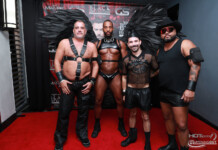Apollo, the Greek god of music, poetry, and healing, had relationships with both men and women. His love for the Spartan prince Hyacinthus is a famous legend.
Zeus, the king of the gods, had a wife and many lovers, one of whom was a young Trojan man named Ganymede.
The Norse god Loki is a trickster figure who is known for his shape-shifting abilities, which he uses to transform into animals, including a mare who gives birth to an eight-legged horse. This fluid gender identity is a key aspect of his character.
The Shinto sun goddess Amaterasu is said to have had a female partner, a goddess named Ame-no-Uzume.
Of course, there are a few queer aspects of the Christian deity as well. In scripture, the supreme being is described in male, female, neutral, and even inanimate terms (one prophet compares God to the Rainbow!).
The deity can, depending on the story setting, be he, she, it, or they. The deity transgresses long-established norms, having elderly women conceive, and a man brings forth life from his body like a woman giving birth; moreover, God declares both women and men to be made in the divine being’s image. That 21st-century humans still struggle with the notion of a divine reality is itself a pretty Queer enterprise, but even more simply and obviously, some traditions feature and celebrate Queer deities.














